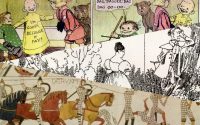Anatomy of a Well-Written Villain
Why Big Bad Wolf from “Puss in Boots: The Last Wish” is an exemplary Antagonist.
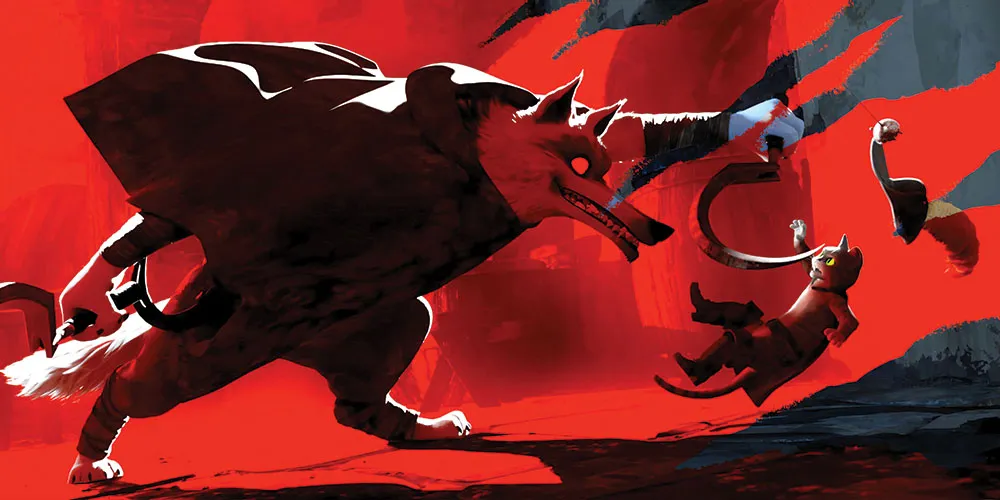
Source: https://www.hollywoodreporter.com
A few weeks ago, I watched “Puss in Boots: The Last Wish” and was immediately struck by the impact of the villain, the Big Bad Wolf. Despite having limited screen time, Wolf’s presence was both compelling and truly terrifying. The movie follows Puss in Boots, who discovers that he has used up eight of his nine lives and sets out on a journey to find the mythical wishing star and wish for more lives. The movie is a must-watch and I highly recommend it. This article will contain spoilers.
The role of the villain in storytelling is crucial. The villain is the character that stands in the way of the hero or protagonist. Their actions and motives push the story forward, serving as a contrast to the hero’s own motives and actions. In “Puss in Boots: The Last Wish,” there are a variety of foes and obstacles for Puss and his friends to overcome, but none compare to the chilling villain, the Big Bad Wolf. Throughout the article, we will explore the key traits of well-written villains and why the Big Bad Wolf serves as a great blueprint for villains in storytelling.
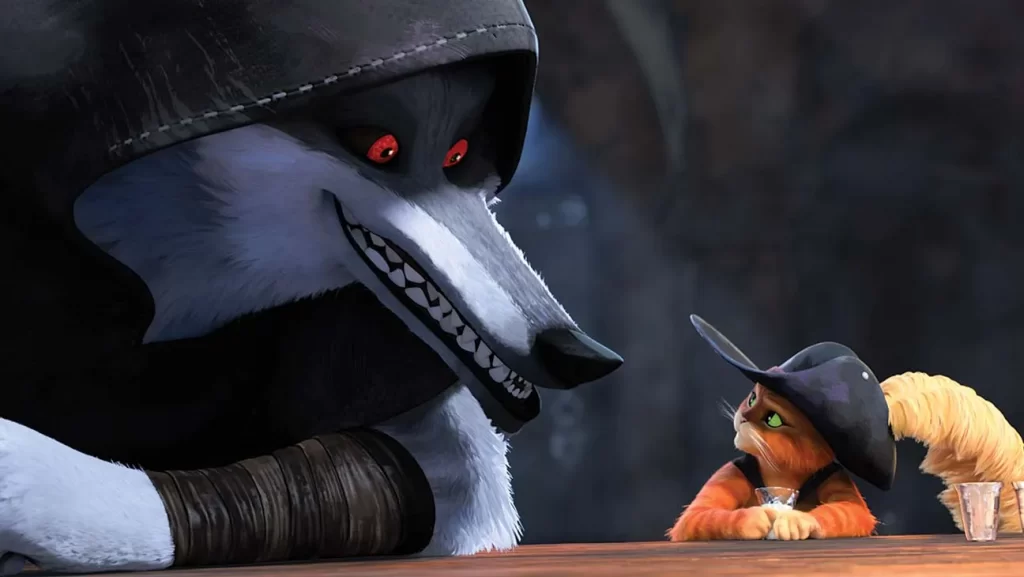
First Scene: The Introduction to the Villain
The introduction of a villain to the audience is vital as it sets the tone for the rest of the story and establishes the character’s presence. A powerful introduction of a villain can be achieved by first establishing the hero’s strengths, weaknesses, desires, and successes. Then introduce the villain in a way that surprises and challenges the hero. This not only creates a memorable first impression but also sets the stage for the rest of the story. Additionally, the villain’s appearance and demeanor can also be important as they can give hints about the character’s personality.
The first introduction of the Big Bad Wolf in “Puss in Boots: The Last Wish” is a masterful example of building tension and creating a memorable villain. The movie begins by establishing Puss in Boots as a legendary and invincible hero, who is not afraid of death. The audience is exposed to the grandiosity of Puss through the many lives he has lived and how he has not once been defeated. However, the arrival of the Wolf changes this perception and sets the stage for a truly terrifying villain. The Wolf’s entrance is marked by an eerie whistling, which serves as a motif throughout the story, adding to the villain’s ominous presence.
A big wolf comes up to a small cat at a bar, the wolf presents itself as a friendly fan, but reveals that they have been searching for Puss in Boots for a long time. Puss thinks that he is a bounty hunter and, confident in his invincibility, halfheartedly fights the Wolf. The problem begins when he is easily outmaneuvered and outsmarted by the villain. The Wolf’s red piercing eyes are particularly noteworthy, as they add to his intimidating and sinister appearance. The key part of this scene is when the Wolf draws blood from Puss, which is not only unexpected for an animated kids’ movie but also impactful to the story. This scene is meant to shock both Puss and the audience and make it undeniably clear that this villain will not be easily defeated. In these few seconds, Puss faces the reality that this villain could possibly end his last life. The confrontation between Puss and the Wolf ends with no clear resolution. Puss runs away running through the sewers, a stark contrast to his theatrical exits after defeating his foes. This moment emphasizes the true danger and threat that the Big Bad Wolf poses to Puss in Boots.
Backstory
A villain’s backstory is just as important as the hero’s, as it can provide insight into the villain’s motivation. It can also evoke sympathy from the audience, since villains are shaped by their past experiences, just like everyone else. A well-crafted backstory can make a villain more relatable, and even make the audience question their actions if they were in the same situation. In the case of the Big Bad Wolf, his real backstory isn’t revealed until the climax of the story.
The Shrek universe is home to characters that are parodies of fables and fairy tales. The Big Bad Wolf appears in many of these stories, such as “The Three Little Pigs,” “The Boy Who Cried Wolf,” and “The Wolf and the Seven Young Kids”. In all three of these fairy tales, the wolf is the villain of the story, who seeks to eat and end the life of the protagonist. In fairy tales, as well as real life, wolves are cunning predators, intruders, or a threat to a community. As in the fables, the Wolf in “Puss in Boots: The Last Wish” seeks his prey and is deemed a larger threat to Puss. Despite there being other antagonists in the movie, like Jack Horner, the Wolf is the ultimate and scariest threat.
Appearances and motivations
Character design can be vital to how memorable a character can be, and for a character as pertinent as the villain, one must be able to recognize and remember them. The way they carry themselves, talk to other characters, and even their moral code can be inferred by their appearances alone. While the villain’s backstory can justify their motivations, their appearance can visually confirm their opposition to the protagonist.
The Wolf’s large silver fur covered by a black hood with unnerving red eyes, already tells a lot about his character. The simple shapes behind his design, as well as his threatening silhouette, conveys a larger threat to the protagonist and are downright terrifying to the audience. The Wolf is sadistic, a thrill-seeking villain who appreciates and prefers a hunt. He enjoys taking lives and even states their love for the smell of fear, as it feeds on to the challenge of the hunt. They have red glowing eyes that observe every single move you make and can outsmart your every move. But despite the Wolf wishing to take Puss’s life, he still has a set of morals to abide by. He is a fair player; whenever he fights and disarms Puss, he will allow the cat to retrieve his sword. He holds life sacred and is enraged by those who do not take it seriously.
What does the villian want to achieve? How will they achieve it? These are important things to find out about a villain as you write a story, no matter if it is presented at the start or shown as a plot twist or during the climax of the story. What makes these motivations credible? Consistency. When the villain is constantly taking action to achieve their goals it gives it far more credibility that they truly desire something and will run to nothing to achieve it, making them that much scarier and more interesting.
As an ultimate discovery in one of the clashes between the Big Bad Wolf and Puss in Boots, we have revealed the ultimate truth, the Big Bad Wolf is Death itself.
“And I don’t mean it metaphorically or rhetorically or poetically or theoretically or any other fancy way. I’m Death. Straight. Up. and I have come for you, Puss in Boots.”
–Death, “Puss in Boots: The Last Wish” 2022.
The ultimate reveal that the Big Bad Wolf is Death adds a layer of depth to the character, as his motivations are tied to his duties as a grim reaper. The Wolf is not a bounty hunter, but a collector of souls, toying with his prey. Something that we know about Death is that he only materializes when offended, angry, or truly invested in the hunt. This makes him a more relatable and understandable villain, as his actions are driven by a sense of duty rather than evil. Despite being the one in charge to take away life, he holds life dear. So when he sees a cat who has wasted his previous eight lives, he concludes that this cat will not cherish his last life and decides to end it altogether. These are his real motivations and duties as a grim reaper, which then ties in altogether his outward appearance of a black hood and sickle resembling a scythe.
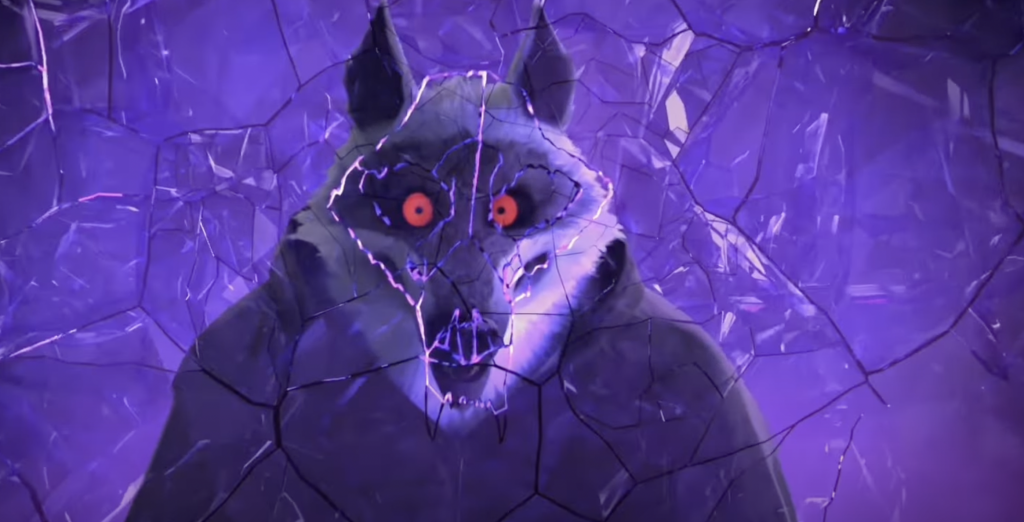
The Looming Presence
A looming villain is one that does not need a lot of screen time to be effective since the lack of screen time is what gives them power. With just over twelve minutes of screen time, the Wolf is able to terrify the audience even with just the threat of his appearance. His eerie whistle serves as a constant reminder of his presence, looming over Puss and the audience. The audience is left in fear, never knowing when he will strike. This is a reminder that death will always be there, stalking and scrutinizing Puss in Boots’s every step.
“Everyone thinks they’ll be the one to defeat me. But no one’s escaped me yet.”
–Death, Puss in Boots: The Last Wish, 2022.
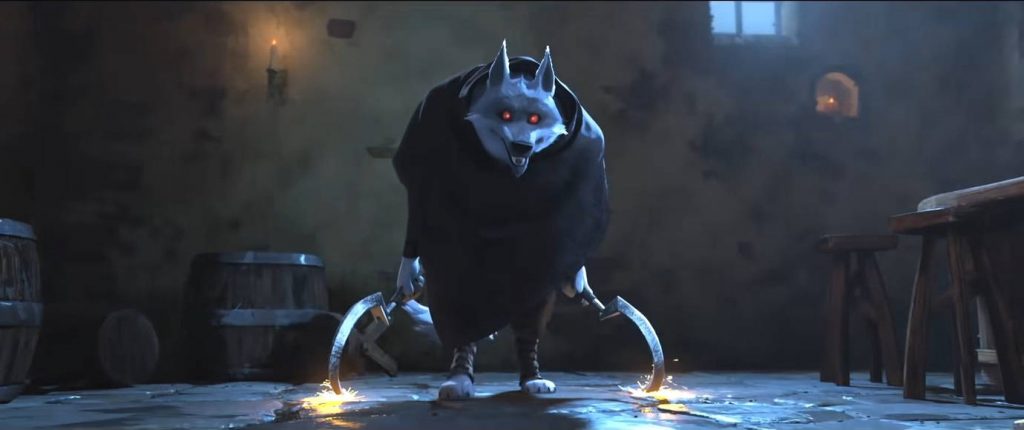
Clash with the hero
There is no Joker without Batman. A villain’s main role is to bring the story forward and to contrast the protagonist of the story. They challenge the beliefs and core of the hero, testing their limits and shaping their actions. Oftentimes, the villain will make the hero realize something that they would have never found out on their own, or change them in a way that would have never happened unless pushed to the extreme. The presence of a villain gives the hero a choice: hold on to what they have always been like and believed in, or completely fall back and do things they would have never imagined. A great example of a villain pushing a hero to the extreme is Naoki Urasaw’s manga, “Monster”, where due to the actions of the villain, the protagonist ends up doing the one thing that defies his core beliefs: an attempt against someone’s life.
Each interaction between the hero and the villain determines how the story will move forward. The beliefs and morals of each character are not credible unless tested, so within each interaction between the characters, their limits are shaped by how they respond to their actions. The villain needs to be a formidable opponent to challenge the hero. Moments when it seems the villain is winning keeps the story grounded, and puts weight on what is at stake if the hero loses.
In “Puss in Boots: The Last Wish”, the Wolf could have easily killed off Puss at any time. He had drawn blood since their first encounter, and this caused Puss to become paralyzed by fear and run as far as possible. For the largest part of the movie, the Wolf toys with Puss, appearing only to remind him of his impending doom. There is a reason why the Wolf avoided killing Puss during their first interaction. As a wolf, he lives for the hunt, so facing the “unbeatable” Puss in Boots sounds like a challenge he would enjoy. While too focused on the hunt, he inadvertently gave time for Puss to change. The journey Puss finds himself on while running from death develops his character greatly. He begins as a cat who only lived for his legendary status, throwing eight of his lives away, eventually realizing that he has lost the opportunity to truly appreciate all of his nine lives.
He had always been a performer, showing off his grandiose skills as a swordsman, defeating every enemy in public to the eyes of all to praise him. He had never had to run away through a sewer, hide in fear of an enemy as frightening as the Wolf. He had never appreciated the fact that he could live nine lives. Even when being told that he only had one life left, he thinks about pursuing more lives, as a way to keep his life as a carefree hero. This is the depreciation that the Wolf despises, and therefore hates the fact that cats get to have nine lives.
As he faces the Wolf, Puss realizes he has been focusing on the wrong aspects of life. He has been trying to wish for more lives instead of truly appreciating and living his last life to the fullest. Towards his final battle with the Wolf, there is a shift. Puss in Boots is no longer fighting for the sake of performance and praise, he is fighting to save the one life he has left. Puss is no longer afraid to die, as he knows it is inevitable, but instead of tossing his life away, he holds onto it and will fight death to keep it. This very moment is the change that the Wolf has created upon Puss in Boots. This particular change and outlook in his own life is what pushes Death away because as mentioned before, despite him being a grim reaper, he has a set of morals.
“You’re RUINING this for me! I came here for an arrogant little legend who thought he was immortal… but I don’t see him anymore.”
–Death, Puss in Boots: The Last Wish, 2022.
The Wolf might partake in the fun when hunting and ending a person’s life, but even he has a set of rules. As someone who values life, he understands that Puss in Boots is a changed cat, and no longer a conceited character who laughs at death. Puss in Boots gets to keep his ninth life, but he knows that at some point he will meet Death again, yet this time it will be much more different, as he now has a newfound respect for life.

The HoneyDripper is the Savannah College of Art and Design’s juried comics and illustration blog, dedicated to publishing, promoting, and showcasing the finest in student work.

